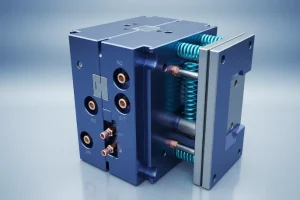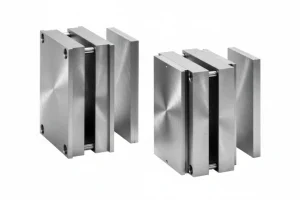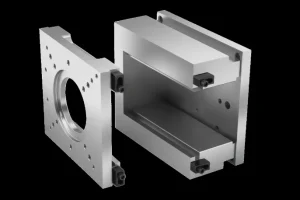Indeed, injection molds can use both hot runners and cold runners in practice at the same time, though there are very few cases to apply this solution and it mainly depends on the particular project and production objectives. This hybrid mold concept of using both hot runner and cold runner systems comes after a realization that these two systems have strengths that can be put into practice without causing weaknesses resulting from their application. This approach of interconnecting the two simulation techniques has the potential of increasing the efficiency of molding process while reducing waste, and ultimately improving the quality of the parts made.

Plastics injection molding is a vital molding procedure applied in the manufacture of varying products made of plastic. Casting technologies assist in improving injection molds’ efficiency and the end product’s quality. Typically in framework of injection mold systems, its possible to distinguish between hot runner and cold runner systems through which the plastic flows. The hot runner system ensures that the plastic melt is maintained in the right temperature, so that it continues to flow through the system, while the cold runner system is used to slow down or cool down the rate of flow of the plastic so that it solidifies. This article will delve into the characteristics of these two systems and explore the feasibility and potential advantages of simultaneously using hot runners and cold runners in injection molds.

What is a Hot Runner System?
A hot runner system keeps plastic in a molten state during injection molding, minimizing waste and improving cycle times. Commonly used in automotive, consumer goods, and medical device manufacturing, these systems help lower material costs and improve part consistency.
Basic Principles of Hot Runners
A hot runner system is a technology for injection molds that keeps the plastic melt flowing by using heating elements. The main parts of this system are hot nozzles, heating pipes, and temperature controllers. The way a hot runner system works is by using heating elements to keep the plastic melt at a constant temperature so it doesn’t cool down and solidify inside the mold.
Hot runner templates are typically made of metal materials with internal heating pipes or plates. These templates are heated to a predetermined temperature through electric heating. Hot runner valves control the flow of plastic, opening and closing based on signals from the heating system. Temperature sensors provide real-time temperature data of the hot runner to the control system by measuring the temperature inside the runner. Hot pads transfer heat energy to the hot runner template by contacting it, ensuring the flowability of the molten plastic.
Hot runner molds are suitable for producing small-sized or complex structured injection molded products, such as cellphone cases, pen casings, etc., effectively improving plastic filling and finished product quality.

Advantages of Hot Runners
1Reduced Material Waste: Hot sprue systems minimize contact between the runner and the melt, diminishing with plastic cooling and solidification as opposed to the cold runner systems.
Increased Production Efficiency: Hot runner systems, as has been mentioned earlier, can greatly enhance production efficiency since a number of defects caused by material waste can be avoided.
Improved Product Quality: The hot runner systems also enable the precise flow of plastics, which in turn produces better and more standardized products.
Shortened Molding Cycle: In fact, hot runner systems can reheated and reduce the total cycle time of injection molding because there is no need to wait until the plastic cools within the runner.

Disadvantages of Hot Runners
Higher Cost: The medium term cost for hot runner systems and its parts particularly heating elements and temperature control units are relatively higher as compared to cold runner systems.
Complex Maintenance: Hot runner systems require periodic servicing and, given that only the manufacturers have specialized access to them, it can be expensive.
Complex Design: Optimization of hot runner systems both in terms of thermal expansion and heat losses makes the design challenging.

What is the Cold Runner System?
Cold runners are simpler and more cost-effective than hot runner systems, as they do not require temperature control. However, they result in higher material waste due to the need to discard excess plastic after each cycle. Cold runners are widely used in lower-volume or less complex molds where cost-effectiveness is a priority. The key drawbacks are material waste and slower cycle times.
Basic Principles of Cold Runners
A cold runner system is a technology for injection molds that controls the flow and solidification of plastic by cooling it. It consists of runners, cooling pipes, and the mold body. The working principle of a cold runner system is to cool and solidify the plastic quickly in the cooling system of the mold body to achieve the desired shape of the product.
The injection machine injects heated, compressed plastic into the mold, where it flows according to pre-set paths and shapes, solidifying into finished products after cooling. Cold runner molds are divided into two types: cooling-only molds and hybrid molds. Cooling-only molds direct the injected molten material directly into cooling channels for solidification, while hybrid molds mix the heated molten material from the hot runner with the cooled molten material from the cold runner to achieve consistent accuracy and aesthetics with product requirements. Cold runners are suitable for producing larger-sized or simpler structured products, such as large water tanks, large components, etc.

Advantages of Cold Runners
Lower Cost: Cold runner systems are cheaper to start with, which is good for small to medium-sized businesses.
Simple Design: Cold runner systems are simpler, without the need for fancy temperature control.
Easy Maintenance: Cold runner systems are easier to fix, which means they cost less to repair.

Disadvantages of Cold Runners
High Material Waste: In cold runner systems, plastic cools down and hardens in the runner, which means you’re throwing plastic away.
Low Production Efficiency: Cold runner systems take longer to make parts because you have to wait for the plastic to cool down in the runner.
Unstable Product Quality: Cold runner systems can make parts that aren’t the same because the plastic doesn’t flow evenly in the runner.

What is the Combination of Hot Runner and Cold Runner?
The combination of hot and cold runners allows manufacturers to benefit from the precision and reduced waste of hot runners, while maintaining the cost-effectiveness and simplicity of cold runners. This hybrid system enhances production speed and reduces material costs, especially for multi-cavity molds. It’s commonly used in industries like automotive, electronics, and medical devices.
Basic Principles of Combination
The application of hot runner and cold runner on injection molds is a new technological innovations that seeks to incorporate elements of both systems to improve the throughput of the production line. The general procedure behind this kind of method is to apply the hot runner system for the principal runner parts of an injection mold, and apply the cold runner system on the subsidiary parts. This helps to achieve the desired flow characteristics of the plastic melt and at the same time manage its solidification through the cold runner system.

Advantages of Combination
Reduced Material Waste: Using the hot runner system directly on the main runner parts can minimize the phenomena of cooling and solidification of the plastic in the runner to meet the reduction targets of the wastage.
Increased Production Efficiency: Integrating hot runners and cold runners also helps reduce the molding cycle time of the products, increasing productivity.
Optimized Product Quality: As the hot runner system maintains a uniform flow of plastic, the cold runner system ensures that solidification of the material occurs in a controlled manner so as to achieve a better end-product quality.
Cost Balance: On the one hand, employing both hot runners and cold runners to some extent can bring down the cost of the hot runner systems but on the other hand it will not allow the high waste rate of the cold runner systems.

Challenges of Combination
Increased Design Complexity: Using both hot runners and cold runners indicates that mold design becomes a little more complicated because you need to look at thermal conductivity and cooling effects.
High Maintenance Requirements: To which using both systems is difficult because it makes the maintenance to be complicated, and you will need professionals who will have the ability to perform maintenance on the system.
Difficulty in Cost Control: By investing in both systems, it is possible to make considerable savings, but the expenditure on implementation and design of both systems is high.

What are the Actual Application Cases?
Injection molds using both hot and cold runners are versatile, offering precise control over temperature and material flow. The hot runner system maintains optimal melt conditions, while the cold runner system ensures stable cooling. Common applications include automotive parts, consumer products, and medical devices. Benefits include reduced waste, improved cycle time, and more consistent part quality.
Case 1: Automotive Parts Manufacturing
In automotive parts manufacturing, combining hot runners and cold runners technology can significantly improve production efficiency and product quality. Used by a certain automotive manufacturer to continuously extrude the melt for the formation of main runner parts by the hot runner system and to quickly solidify the melt for the formation of sub-runner parts by the cold runner system, this technology helps provide efficient production of its automotive parts and high quality products.
This automotive manufacturer reported that in practical operations of injection molding, in addition to cutting material usage, hot runners and cold runners systems offer big benefits to shortening molding cycle. For instance, the change in the cycle time of a component of a mechanical assembly was from 50 seconds to 30 seconds, and the wastage rate from 10 % to 2%. This successful example speaks volumes about the possibilities of using hot runners and cold runners to their full advantage and their potential in applications.

Case 2: Electronic Product Enclosure Production
Concerning production of enclosures for electronic products, the application of hot runners and cold runners technologies mean cutting the amount of waste produced and increasing production yield. A particular manufacturer of electronic products uses the technology to create intricate plastic casings; the hot runner system allows for equal distribution of the plastic; the cold runner system helps to control the subsequent solidification of the plastic and to make the product more consistent and better.
The manufacturer found out through their analysis of real life situations that the use of hot runners and cold runners systems boosted production by 20% and reduced wastage levels by 15%. This method also helped in increasing product standardization while at the same time minimizing the use of raw materials and cost of production.

What are the Technical Details of the Design and Implementation?
Hot runners maintain consistent temperatures to reduce waste and cycle times, while cold runners are simpler and less expensive but can result in higher material waste. Hot runner systems are preferred for high-volume production due to their efficiency, whereas cold runners may be more cost-effective for smaller runs or simpler designs.
Design Considerations
When designing injection molds that combine hot runners and cold runners systems, several key factors need to be considered:
Thermal Management: Hot runner systems require maintaining stable temperatures to ensure the flowability of the plastic melt, necessitating the design of efficient heating elements and temperature control systems.
Cooling Efficiency: The plastic melt, which is ejected from the mold, needs to be cooled and solidified rapidly, in the cold runner systems, thereby calling for optimization of the cooling channels and mold cooling.
Flow Balance: The ratio of plastic flow through the hot and cold runner systems must be well managed to considerably eliminate product Quality and structural defects.
Material Compatibility: Having a compatible choice of plastic for the hot runner and cold runner system one is ensured of the flow characteristics of the molten plastic and its tendency to solidify at different temperatures.

Implementation Steps
Requirements Analysis: Calculate production requirements and requirements for the product design, evaluating whether the two-plastics system and use of a hot runner and cold runner can be used in production.
Mold Design: As another step different analytic approaches based on results derived from the requirements analysis, should be continued by mold design especially about the hot runner and cold runner connection points.
Design of Heating and Cooling Systems: Develop reliable heating systems for the heating of the materials and temperature control, adequate cooling systems for the pipelines and efficient mold cooling circuits.

Sample Testing: Prepare mould samples, carry out tests on the hot and cold runner systems and the quality of the final product.
Optimization Adjustments: After testing the hot and cold runner systems, fine tune parameters practically to achieve the best overall efficiency.
Formal Production: When optimizing control parameters, move to formal product making as continuous checks are made to attain set production rates and quality.

What are the Technological Developments and Future Prospects?
Hot runners maintain the plastic melt at optimal temperatures, reducing waste and improving cycle times in injection moulding. Cold runners, on the other hand, are simpler and more cost-effective, but may result in more material waste. Both systems offer unique benefits depending on the application, with hot runners excelling in high-volume production and cold runners suited for simpler, low-cost needs.
Indeed, it appears that the further development of injection moulding technology will cause hot runners as well as cold runners technology to become more important in a range of different areas. Future development trends include:
Intelligent Design: Automate the design particularities of the hot runners and cold runners to advance the design collaboration, design precision, and proficiency. For example, tools like computer-aided design (CAD) software and computational fluid dynamics (CFD) simulation can be employed in the accurate determination of mold structures and the choice of best hot runner and cold runner system.

Application of New Materials: As new plastic material emerges for molding, the concepts of hot runner and cold runner technology will be further enhanced for better production line and even the quality of the final products. For instance, the present invention allows for the production of highly thermally conductive plastics that can enhance the cooling effectiveness of cold runner systems and thereby reduce the molding cycles.
Green Manufacturing: There are various methods of incorporating hot runners and cold runners in the manufacturing process in order to enhance the physical appearance, reduce material wastage, time and energy used in the process, in an attempt to achieve the green manufacturing endeavour. In the future, some other companies will be likely to adopt this particular technology to increase their positive environmental impact and decrease cost of production with a view to enhancing sustainable development.

Comprehensive Optimization: The scheme of integrating hot runners and cold runners technologies is not only focused on optimizing the production of specific products but also the overall production. For instance, use of automated control system to continually monitor and control operations of hot runners and cold runners in more efficient manner would also enhance efficiency of production as well as the quality of the final products.
Conclusion
Germane to the consideration of hot runners with cold-sides in injection molds is a marvelous technological innovation which has a lot of potential and prospects to it. In enabling the best outcome then it favors improved production capacity, improved product quality, and less scrap and additional costs for production. There are some limitations of design and implementation, including complexity of design and high maintenance need, but as more and more experiences and developing technologies are applied to it, its application domains may expand greatly in the future. It is for this reason that injection mold technology is expected to advance to intelligent and sustainable injection mold innovation and development in the future to enhance its growth and enable future technological advancement in the manufacturing sector.

This discussion shows that demand and hot runners and cold runners technology in one system, is not only a real option, but also has certain features in the production of various parts. When it comes to automotive parts or more specifically the enclosures of electronics products, the use of hot runners and cold runners has demonstrated remarkable application to increase the manufacturing efficiency, minimize material consumption and enhance the product quality. In the near future as the technologies grow and trend marches on this unique technology will continue to present and present more opportunities and challenges to the injection mold industry.
In the future , a number of opportunities and challenges will surround the injection mold industry. For example, developing intelligence manufacturing technology will step into a smart manufacturing era. The application of artificial intelligence, even big data analytics, and IoT technologies help in intelligent monitoring in the injection mold production process and optimization adjustments in the process to make the production more efficient and the products more superior in quality.

In conclusion, the dual or combined use of hot-runners and cold runners in injection molds can be described as a highly stimulating technological initiative with profound theoretical and pragmatic value. It makes for easier planning and design and allows for better organization in terms of flow control, production rate, and better product quality; further it helps in better usage of the materials used in the production process and lowers production costs. It is believed that as technology advances further in the future and as the world gains more application experience, this particular technology will unlock more application demands in the injection mold industry and propel innovation in other manufacturing industries too.








